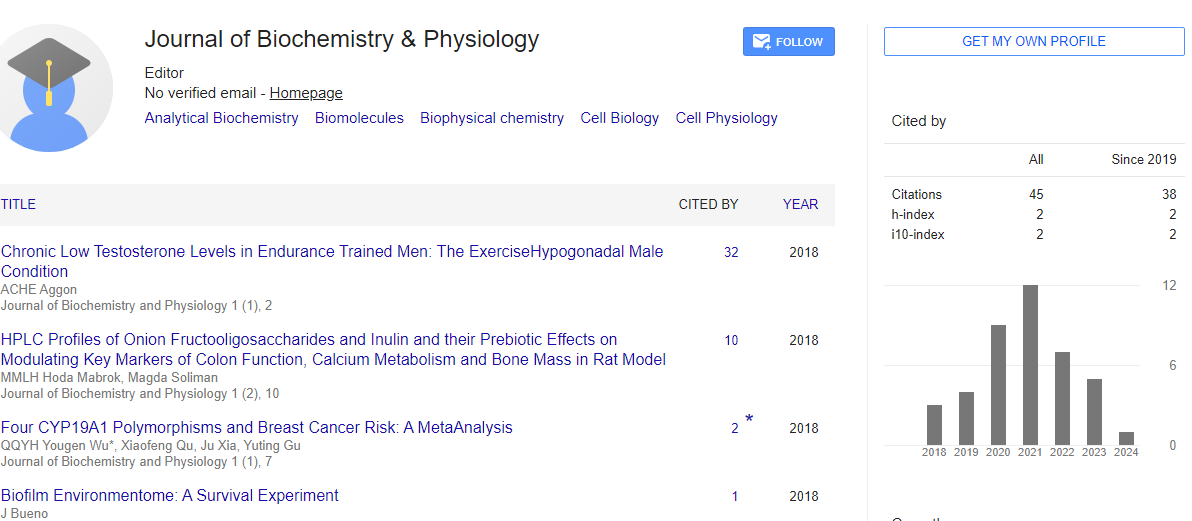Opinion Article, J Biochem Physiol Vol: 7 Issue: 3
Interaction of Neural and Hormonal Signals in Regulating Human Homeostasis: A Comprehensive Review
Luca Giovanni*
1Department of Neuroscience, University of Milan, Milan, Italy
*Corresponding Author: Luca Giovanni,
Department of Neuroscience, University
of Milan, Milan, Italy
E-mail: giovanni.luca@email.com.it
Received date: 19 August, 2024, Manuscript No. JBPY-24- 149085;
Editor assigned date: 21 August, 2024, PreQC No. JBPY-24-149085 (PQ);
Reviewed date: 04 September, 2024, QC No. JBPY-24-149085;
Revised date: 12 September, 2024, Manuscript No. JBPY-24-149085 (R);
Published date: 19 September, 2024, DOI: 10.4172/jbpy.1000171.
Citation: Giovanni L (2024) Interaction of Neural and Hormonal Signals in Regulating Human Homeostasis: A Comprehensive Review. J Biochem Physiol 7:3.
Description
Homeostasis, the process through which the body maintains a stable internal environment despite external changes is important for sustaining life. This complex balance is achieved through the dynamic interplay of neural and hormonal signals, which coordinate physiological responses across various systems in the body. Understanding how these systems interact provides insights into how the body regulates vital functions such as temperature, blood pressure and fluid balance.
The neural system plays an important role in homeostasis through its rapid response mechanisms. The Autonomic Nervous System (ANS), which includes the sympathetic and parasympathetic branches, is essential for immediate responses to internal and external stimuli. For example, when the body experiences a threat the sympathetic nervous system activates the "fight or flight" response, releasing neurotransmitters like norepinephrine that increase heart rate, dilate airways and redirect blood flow to muscles. The parasympathetic nervous system promotes a "rest and digest" state, decreasing heart rate and enhancing digestive processes. This duality allows for a swift adjustment to changing conditions, ensuring that the body can respond effectively to stressors.
Hormones, secreted by endocrine glands, provide a slower but longer-lasting regulatory mechanism for homeostasis. Hormones such as insulin and glucagon, produced by the pancreas, play critical roles in regulating blood glucose levels. When blood glucose levels rise after a meal, insulin is released, facilitating the uptake of glucose by cells for energy or storage as glycogen. In contrast, during fasting or low glucose levels, glucagon is released to stimulate the liver to release glucose into the bloodstream.
One of the most significant areas of interaction between neural and hormonal signals is Hypothalamic-Pituitary-Adrenal (HPA) axis. The hypothalamus, a key brain region, integrates neural input from various sources and responds by releasing Corticotropin-Releasing Hormone (CRH). CRH stimulates the anterior pituitary gland to secrete Adrenocorticotropic Hormone (ACTH), which in turn, prompts the adrenal glands to release cortisol. This stress hormone prepares the body to respond to perceived threats by increasing glucose availability, suppressing immune function and enhancing cardiovascular responses. Thermoreceptors in the skin and hypothalamus detect changes in body temperature and send signals to the hypothalamus. If the body is too hot, the hypothalamus activates mechanisms such as vasodilation and sweating through autonomic pathways, while also promoting the release of hormones like Atrial Natriuretic Peptide (ANP) that help lower blood pressure and reduce heat production. When the body is cold, the hypothalamus triggers vasoconstriction and shivering, alongside the release of thyroid hormones, which enhance metabolic rate and heat production.
Conclusion
The regulation of human homeostasis is complex processes that depend on the complex interaction of neural and hormonal signals. This dynamic collaboration allows the body to respond rapidly to immediate challenges while also coordinating longer-term physiological adjustments. Understanding these mechanisms not only enhances our comprehension of basic physiological processes but also provides critical insights into the development of therapeutic strategies for various health conditions, emphasizing the importance of maintaining homeostasis for overall well-being.
 Spanish
Spanish  Chinese
Chinese  Russian
Russian  German
German  French
French  Japanese
Japanese  Portuguese
Portuguese  Hindi
Hindi 